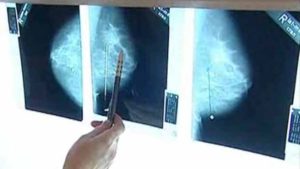 We all know that microbes (fungi, viruses, bacteria) live throughout our bodies - this is the human microbiome or microbiota. What is really interesting is that cancer tumors also have microbiomes (tumor microbiome), and these microbial communities are different than that found in healthy people (without tumors).
We all know that microbes (fungi, viruses, bacteria) live throughout our bodies - this is the human microbiome or microbiota. What is really interesting is that cancer tumors also have microbiomes (tumor microbiome), and these microbial communities are different than that found in healthy people (without tumors).
For a while it has been known that tumors (e.g., breast cancers) have different bacterial species than healthy tissue - the microbiome is different. Several recent studies find that tumors can also contain fungi, and cancers with certain fungal species have worse outcomes than those without the fungi. The mycobiome is the community of fungi that live in or on humans.
Also, the combination of fungal species are different depending on what kind of cancer that a person has. A group of scientists have put together a list (mycobiome atlas) of the distinctive fungi that are found with 35 different cancer tumors. This is exciting because in the future cancers could potentially be found by the microbial (fungi and bacteria) DNA they shed in the blood.
However, no one knows really why the fungi are in the tumors. For example, are they aiding the cancer development? Or is the cancer allowing the fungi to grow? Are the fungi interacting with the immune system? Or??
Several recent articles discuss this exciting new research.
From NY Times: A New Approach to Spotting Tumors: Look for Their Microbes
Look up an image of a tumor on Google, and you’ll probably end up with a brightly colored cluster of cancer cells on a drab background of healthy tissue. But for Lian Narunsky Haziza, a cancer biologist at the Weizmann Institute of Science in Israel, the picture looks very different. A tumor may also contain millions of microbes, representing dozens of species.
Scientists have long known that our bodies are home to microbes, but have tended to treat tumors as if they were sterile. In recent years, however, researchers have laid that notion to rest, demonstrating that tumors are rife with microbes.
In 2020, several research teams showed that tumors are home to various blends of bacteria. And on Thursday, two studies published in the journal Cell found that tumors are also home to many species of fungi.
From The Scientist: Fungal DNA, Cells Found In Human Tumors
Fungal DNA is present in various types of cancer, according to two studies published yesterday (September 29) in Cell.
Both studies examined tissues from multiple types of human cancers throughout the body. One group, led by researchers at the Weizmann Institute of Science in Israel and the University of California, San Diego (UCSD), reports detecting fungal DNA or cells—typically at low abundance—in 35 different cancer types, with fungal species composition differing among them.
The discovery of fungi was “surprising because we don’t know how fungi could get into tumors,” study coauthor Rob Knight, a microbiome researcher at UCSD and a cofounder of Micronoma, which develops methods of diagnosing and treating cancer using microbial biomarkers, says in a press statement. “But it is also expected because it fits the pattern of healthy microbiomes throughout the body, including the gut, mouth and skin, where bacteria and fungi interact as part of a complex community.”
From Science Daily: Mycobiome atlas describes associations between cancers and fungi
An international team of scientists, co-led by researchers at the University of California San Diego School of Medicine, has created the first pan-cancer mycobiome atlas -- a survey of 35 types of cancer and their associated fungi.
Fungi found on the human body come in two main types: environmental fungi, such as yeasts and mold that generally pose no harm to most healthy people, and commensal fungi, which live on or inside the human body and may be harmless, provide a benefit such as improving gut health or contribute to disease, such as yeast infections or liver disease. Fungi also play a role in shaping host immunity, for better or worse, which looms large in immunocompromised persons, including cancer patients.
The new study characterizes the cancer mycobiome -- fungi linked to cancers -- in 17,401 samples of patient tissues, blood and plasma across 35 types of cancer in four independent cohorts. The researchers found fungal DNA and cells in low abundances across many major human cancers, with differences in community compositions that differed among cancer types.
For example, one species of fungi was found to be enriched in breast cancer tumors of patients older than 50 years while another species was notably abundant in lung cancer samples.
The researchers said there were significant correlations between specific fungi and age, tumor subtypes, smoking status, response to immunotherapy and survival measures. Whether the fungi are simply correlated or causally associated remains to be determined.
